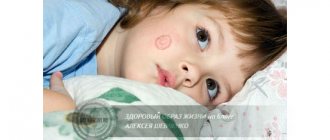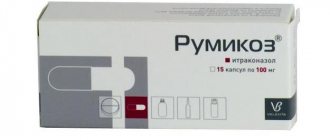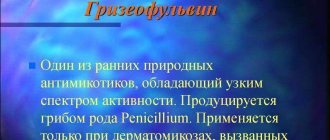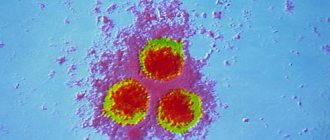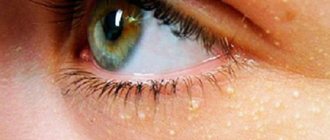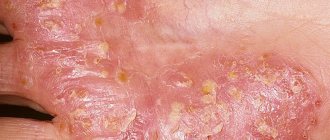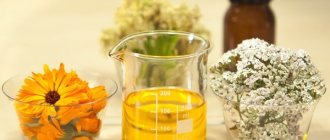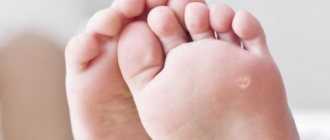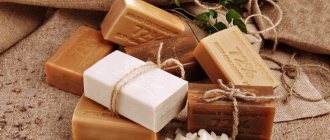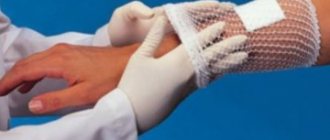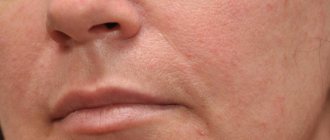Tinea versicolor (also called pityriasis versicolor) can appear as multi-colored spots of varying sizes on the skin. The disease is fungal in nature.
The causative agent is considered to be the skin fungus pityrosporum oval, which lives on the skin of almost every person. The fungus affects the stratum corneum of the skin and the cuticle of the hair.
The age of patients suffering from the disease usually ranges from 7 to 40 years.
When a person's immune system is weakened, this fungus becomes active and begins to act aggressively. It is especially dangerous with a certain chemical composition of sweat, with increased sweating and disruption of the basic physiological processes of the skin.
Sometimes the causes of tinea versicolor may be disturbances in the gastrointestinal tract, the functioning of the autonomic and central nervous systems.
Other causes of lichen are hormonal imbalances, in particular due to the use of oral contraceptives.
There is an opinion that tinea versicolor can occur against the background of tuberculosis, asthma and other chronic pulmonary diseases.
What is color (pityriasis versicolor, multi-colored) lichen in humans
Colored or multi-colored lichen in humans is a skin disease that causes the activity of a special type of yeast fungi Pityrpsporum orbiculare and Malassezia furfur, parasitizing in the upper layer of the epidermis.
The characteristic symptoms of lichen are the appearance of pinkish-cream, brownish-yellow and red spots of irregular shape, covering mainly the skin on the chest, shoulders, abdomen, back, armpits and groin. Less commonly, spots appear on the face, on the head under the hair and on the genitals, almost never on the feet and hands. Unlike ringworm, when patches of ringworm appear on the scalp, the hair never falls out.
At first, the spots are pale and small in size (3-5 mm), but then they become brighter, enlarge and spread, merging into large lesions with jagged edges. Ringworm patches are sometimes slightly or moderately itchy.
A common type of pityriasis versicolor is the pityriasis form, in which flaking of the skin appears on the surface of the spots, similar to flour or fine bran.
The disease is characterized by a long course with exacerbations. But lichen versicolor is not dangerous to health, causing only aesthetic defects and psychological discomfort.
It has been noticed that the longer and more often the skin is exposed to the sun, the lighter the spots become and the more they peel off under the influence of ultraviolet radiation. Therefore, another name for the disease is sun fungus. Under sunlight, the pathogen dies and is removed from the skin along with exfoliated scales. Sometimes pityriasis versicolor can heal spontaneously with frequent ultraviolet exposure.
How to cure forever with medication
Before starting treatment for lichen in a person, you need to have an accurate diagnosis, which only a dermatologist can establish. After determining whether the patient has tinea versicolor or not, the doctor prescribes medications in the form of ointments, tablets and shampoos. In addition, traditional medicine methods also help cure the disease. Below you can find popular drugs used in therapy against pityriasis versicolor.
How to cure pityriasis versicolor? Try the following folk remedies recipes:
- Tincture of calendula. To do this, take the flowers of the plant and alcohol or vodka in a ratio of 1:5. Leave in a dark place for about a week. Rub the tincture on damaged skin up to 3 times a day.
- Onion or burdock juice. Take 2 onions. Grind them, strain the juice through cheesecloth and rub it on your skin three times a day. Carry out the procedures in a course of 2 weeks. You can use burdock leaves instead of onions.
Drugs
Medicines prescribed to patients with tinea versicolor are presented in several forms:
- Local preparations for external use: cream, ointment, spray, solution, for example, “Mikospor”, “Bifosin”, “Clotrimazole”, salicylic lotions, gels and shampoos.
- Complex antifungal drugs in tablet form: Ketoconazole, Itraconazole, Fluconazole, Diflucan.
Ringworm appears suddenly. The fungal spores of the Malassezia furfur form that cause the disease do not make themselves felt for a long time.
Under the influence of heat, bright sunlight, or when wearing synthetic clothing, fungal spores are activated, and spots of different shapes and colors appear on the skin. Although tinea versicolor is not a serious disease, without complex therapy it remains with its owner for many years.
In unadvanced cases, the correct course of treatment prescribed by a dermatologist will help get rid of the problem in 7-15 days.
Pills
To kill fungal spores, take antifungal drugs:
- Erbinol.
- Orungal.
- Funit.
- Itraconazole
- Exephine.
- Ketoconazole.
- Exiter.
The duration of use and the number of tablets taken are determined by the attending physician, depending on the characteristics of the disease.
A course of vitamins and a balanced diet during therapy will help to consolidate the results.
Creams and ointments
Oral medication is combined with external treatment. Antimycotic ointments and creams are applied to the affected areas of the skin:
- Mikofin.
- Ketoconazole.
- Nizoral.
- Clotrimazole.
- Erbinol.
The ointments are applied for two weeks. As prescribed by the dermatologist, the course is repeated. In addition, it is recommended to wipe colored stains twice a day with 1% salicylic alcohol.
An alternative to ointments in the treatment of tinea versicolor are antifungal sprays:
- Lamisil.
- Fungoterbin.
- Terbinafine.
- Kenasten.
- Thermikon.
The spray is applied not only to the affected areas of the skin, but also to adjacent areas of the epidermis. It is used twice a day, for 7-14 days.
Physiotherapy
To prevent relapse, physiotherapy methods are indicated at the end of the course of treatment:
- Ozone therapy (disinfects the entire surface of infected skin and adjacent areas).
- Magnetic therapy (eliminates skin irritation, itching).
- Ultraviolet irradiation (restores the protective properties of the skin).
- Ultrasound treatment (regenerates the skin).
Physiotherapy can also be used during treatment, as an additional means that enhances the effect of taking medications.
You can combine traditional therapy methods with taking medications. Complete replacement with home treatment is possible only after consultation with a dermatologist.
Removing fungal microspores at home is possible using:
- Taking baths: salt baths, with blackcurrant infusion.
- Rubbing the damaged skin area with table vinegar.
- Lotion with onion juice, burdock oil.
- Lubricating the skin with liquid tar soap.
Drug treatment can be supplemented by lubricating the skin with calendula ointment. Calendula reduces redness, inflammation, and skin itching. Calendula-based cream is a disinfectant and will prevent the fungus from spreading to healthy parts of the body.
Herbal decoctions
Effective remedies for tinea versicolor are herbal tinctures and decoctions used both internally and externally. To prepare herbal antifungal teas, use herbs:
- Chopped blackberry leaves. 1 tbsp. l. dry mixture is boiled in a glass of water for 10 minutes. The decoction is consumed 2 times a day, before meals.
- Tincture of black currant leaves. Prepare using the above method.
- Eucalyptus tincture. Dry herbs (in the proportion of 1 tablespoon per liter of water) are boiled in a water bath, cooled, consumed throughout the day, a few sips at a time.
For wiping the whole body, tinctures of St. John's wort, calendula, chamomile, and other anti-inflammatory herbs are used.
Antifungal therapy can be supplemented with special shampoos:
- Nizoral.
- Cynovitis.
- Mycozoral.
- Dermazol.
- Sulsena.
Shampoos are also used after the end of treatment, to prevent relapse, for prophylactic purposes.
Hormones for lichen
Hormones are strictly prohibited for use in cases of infectious lichen, microbial eczema, fungal skin infections, erythrasma, and various forms of streptoderma. They very strongly suppress local immunity and have an anti-inflammatory effect, but they do not fight the infection in any way, but only help it.
However, special care must be taken with hormonal ointments and creams. Only a doctor should prescribe hormonal medications for eczema. Initially, it is necessary to prescribe weak hormones, and only if there is no effect and if it is necessary to continue treatment, stronger hormonal agents should be prescribed. The course of treatment should be as short as possible, and the amount of hormonal agents applied to the skin should be as small as possible.
If you violate these principles, and from the very beginning generously apply the most powerful hormonal drugs to the affected skin, then you will soon find that nothing more than this very strong hormonal ointment and cream helps. After some time, it will become clear that for some reason this strongest hormonal ointment or cream does not help as well as before, and you need to apply it more and more often.
In the end, the strongest hormonal ointments no longer help at all, nothing else helps at all, and at the same time there is a serious exacerbation that cannot be treated in any way. This is the price to pay for self-activity and the feeling of “almost complete” recovery against the backdrop of prescribing strong hormones to yourself. So, we will describe in order of increasing activity local glucocorticosteroid drugs for the treatment of eczema.
How to treat tinea versicolor that is not amenable to local therapy
If the skin pathology stubbornly does not respond to treatment with ointments for lichen after using them for 2-3 weeks, in addition to antifungal gels or shampoos and keratolytics, antifungal drugs in tablets are added. The standard duration of use is 1-3 weeks. During treatment with tablets, the spots continue to be treated with antimycotics and keratolytics.
To treat severe cases of pityriasis versicolor, tablets with active ingredients are used together with ointments:
- Ketoconazole (Fungavis, Oronazole, Mycozoral, Nizoral);
- Itraconazole (Mikonihol Irunin, Orunit, Orungal, Teknazol, Kanditral, Itrazol, Rumikoz);
- Fluconazole (Forkan Flucostat, Mikomax, Mikosist, Ciskan, Diflucan).
Do not use oral ringworm medications on your own. Only a specialist will develop the treatment regimen needed for a particular patient and determine the dose. Some regimens involve taking pills daily, others once a week or every other day.
Medications
Tablets for pityriasis versicolor (pityriasis versicolor) are an excellent choice for getting rid of this disease. The variety of drugs allows the doctor to individually approach the treatment of each patient.
When you contact your doctor, he will tell you about the advantages and disadvantages of each drug.
Mycozoral. After starting to take this drug, there is a sharp disappearance of spots and all symptoms of the disease. The patient, rejoicing, stops treatment. And this is the main mistake. Drug therapy should not be interrupted under any circumstances. There is an almost 100% chance of relapse of the disease.
Side effects may include:
- headache;
- dizziness;
- constant feeling of drowsiness;
- the appearance of anemia;
- increased sensitivity to bright light;
- allergic reactions: urticaria, skin rashes, anaphylactic shock, fever.
Strict contraindications to treatment with Mycozoral tablets include:
- Chronic liver diseases.
- Diseases of the adrenal glands.
- Chronic alcoholism.
- Breastfeeding period in women.
- Children under three years of age.
Ketoconazole. This is a synthetic antifungal agent. A distinctive feature of this drug is that it is taken once a day with meals, 200-400 mg. Course from one to four weeks.
Ketoconazole is available in tablets and capsules. Recommended to take with meals. This reduces the risk of side effects.
The drug is contraindicated in the following pathological conditions:
- diseases of the cardiovascular system;
- kidney diseases;
- adrenal gland diseases.
While taking this drug, it is strictly forbidden to drink alcoholic beverages and drink grapefruit juice.
Fungoterbin. This drug, in addition to the tablet form, is also available in the form of an ointment and spray. This drug is much better tolerated than others.
Side effects should be noted:
- slight loss of taste;
- intestinal disorders;
- muscle and joint pain.
Binafin. This drug has almost the same side effects as Fungoterbine. Both of these drugs are prohibited for women to take during pregnancy and breastfeeding.
Rumicosis. The drug is prescribed if a severe or protracted form of a disease such as tinea versicolor is diagnosed.
Side effects:
- pain in the abdominal area;
- constipation;
- dizziness;
- hair loss may occur;
- there is a lack of potassium;
- toxic liver damage.
Itraconazole
Treatment of the disease is not carried out with tablets of this drug for the following concomitant diseases:
- Pathology of the kidneys and liver.
- Chronic heart failure.
- Obstructive bronchitis and chronic lung diseases.
The advantage is taking this medication in a small therapeutic dosage and for a short time.
The drug is strictly contraindicated in pregnant women due to the high risk of harm to the fetus.
All tablets that can be used to treat tinea versicolor must be taken for at least 10-14 days without a break. Treatment with tablets can be combined well with external use of ointments, sprays, and lotions.
Ringworm also responds very well to treatment using traditional medicine.
Treatment of pityriasis versicolor during pregnancy
Peculiarities:
- You should not take any antifungal agents orally, as they may have a negative effect on the fetus.
- Externally, locally, it is best to use Nizoral shampoo. And only in cases where the benefit to the mother’s body outweighs the risk to the fetus. Treatment should be agreed with your gynecologist.
- In most cases, it is better to wait until childbirth and then carry out a full course of treatment.
- Remember: the pathogen has no effect on the fetus and does not affect childbirth.
Ointments
Treatment is recommended only after examination by a doctor. Only a specialist can tell you what to apply to a person’s lichen in a particular case. As a rule, doctors prescribe antifungal, antibacterial and antihistamines that have been proven over the years. A good ointment for lichen on a person’s skin almost always guarantees a 100% result. If you follow the instructions, you can recover quickly.
Sulfur ointment for lichen has been used for a long time. The product contains an emulsion of petroleum jelly with water and high-purity sulfur. The active substance of the drug reacts with the surface of the epidermis, forming antiparasitic and antimicrobial compounds. The product cleanses dead skin cells, exfoliates them, and helps wound healing. The course of treatment lasts about 5-6 days.
Another popular anti-lichen cream for humans is Exoderil. This is a universal antifungal agent used in the treatment of dermatophytes and mycoses. The main active ingredient of the drug is naftifine hydrochloride. It significantly reduces the formation of ergosterol by fungal cells. The product reduces inflammation and itching, and actively fights against the spread of bacterial infections. Lubricate the affected areas of the skin for about 2-4 weeks.
- Ringworm - treatment with ointments, tablets and folk remedies
- Lichen versicolor - treatment with ointments, tablets, diet and folk remedies
- Ringworm in humans
Application diagram
Antifungal therapy with external drugs follows the general scheme. Patients must do a number of things:
Twice a day, areas affected by lichen should be treated with salicylic alcohol or another keratolytic agent.
For effective treatment, it is recommended to use several antifungal drugs with different active substances. Ointments are applied to the lichen one by one. The course of treatment should last four weeks. For example, it is recommended to use Fungoterbin and Mycozoral with Clotrimazole.
For large affected areas, you need to resort to complex therapy. It is recommended to supplement the use of creams and ointments with systemic medications.
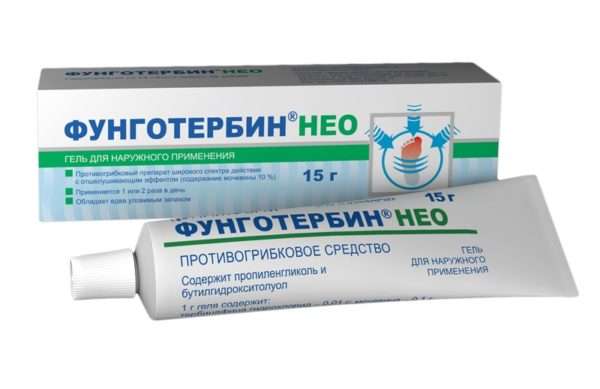
After completing treatment, you need to take tests for control. The patient is considered recovered if the pathogen was not detected in three samples. In case of positive results, the course of treatment is repeated, only other antifungal drugs are used.
It is important to take therapy to its logical conclusion. It is unacceptable to stop using medications after symptoms disappear. This will help avoid relapses.
Particular attention should be paid to preventive measures. During hygiene procedures, shampoos with antifungal ingredients should be used.
The full therapeutic course lasts about two months. Full compliance with the treatment regimen will significantly speed up the recovery process.
Is it possible to cure pityriasis versicolor forever, how and how to do it quickly and forever?
The causative agent of pityriasis versicolor (varicolored) constantly lives in the hair follicles and epidermis, without causing the development of a pathological process at normal concentrations.
The disease manifests itself only in cases where suitable circumstances arise for increased proliferation of the fungus.
It is impossible to get rid of the disease forever, since at different periods of the carrier’s life, under the influence of factors favorable for the growth of the fungus, symptomatic manifestations of the disease may appear again.
Important!
Despite the fact that lichen versicolor is a chronic disease that can appear at any time, the pathology is highly treatable.
How long should medications be used?
If you follow the doctor's recommendations, lichen versicolor in a person completely disappears in an average of a month, but sometimes this period lasts up to two months. Treatment must be continued until clinical and mycological recovery.
- The main external sign of recovery is the absence of peeling in the lesions.
- The condition of the skin is monitored using a fluorescent lamp - there should be no yellow-brown glow in the lesions.
- Microscopy method - no threads of fungal mycelium should be detected in skin scrapings.
After recovery, for cosmetic purposes, a course of ultraviolet irradiation of previously affected areas is carried out to even out the skin color.
On the head
If pityriasis versicolor is located on the scalp, it is called seborrhea, or dandruff.
The symptoms are exactly the same - spots, itchy scalp, flaking. At the same time, it is peeling that most often worries patients. How to treat pityriasis versicolor on the head and other hairy areas of the body - and in the same way as on other parts of the body. Just choose not a cream or ointment, but a spray or solution for external skin treatment plus shampoo with an antifungal agent.
Diagnosis and treatment
To select high-quality and effective treatment, the patient must undergo diagnostics. Without an examination, it is difficult to make an accurate diagnosis due to the similarity of symptoms with other diseases.
Diagnostic measures
Diagnostic methods:
- visual examination by a dermatologist;
- biochemical analysis;
- performing the Balser test;
- use of Wood's lamp.

There are the following types of diagnostics:
- Biochemistry. A scraping is taken from the patient. The resulting sample may contain fungal spores when treated with appropriate chemicals.
- Wood's method. The flaky top layer is scraped off. Areas affected by the fungus are detected using a special lamp that produces fluorescent staining. This analysis is carried out in a darkened room.
- Balser's test. An alcohol solution of iodine is used for analysis. It treats the surface of the skin on the diseased area of the body. Upon contact with the fungus, the color produced by iodine becomes more intense.
Remember! After diagnosis, the doctor prescribes appropriate treatment for the patient. It is selected separately for each patient, taking into account the patient’s condition and the duration of the disease.
General information
Pityriasis versicolor (varicolored) is a disease that develops under the influence of a chronic fungal infection that spreads to the stratum corneum of the epidermis.
The general name “lichen” was known back in ancient times, when this term was used to describe almost all skin diseases in which flaky colored spots appeared on the surface of the skin. This infectious pathology is often inherited by a person. The disease most often occurs in people who live in countries with very hot climates.
Treatment of deprivation
Let's find out how to treat multicolored lichen on our own, and what medications we will need. Just remember that symptomatic therapy and self-medication end in relapses.
Treatment consists of treating the skin for 3-7 days with antifungal and anti-inflammatory compounds, including:
- "Mikozolon";
- "Salicylic-resorcinol alcohol";
- "Andriasyan's Liquid".
See also: Tablets for high blood pressure
The entire skin must be treated; this is the only way to prevent possible exacerbations. Destroying a fungal infection is a slow process. Treatment can take months and sometimes years. The fact is that in unfavorable conditions the fungus forms a protective spore form, which helps to wait out the encounter with medications or any other factors that interfere with the normal functioning and reproduction of the infectious agent.
Complex therapy is prescribed if symptoms show that the disease has become widespread and advanced. Allylamines, for example, “Exoderil” and azoles: “Travogen”, “Clotrimazole”, “Candide” received good recommendations in its treatment. And to this day they use the Demyanovich method, the essence of which is to treat rashes with solutions of hydrochloric acid (6%) and hyposulfite (60%). Special shampoos containing ketoconazole are also used: “Sebozol”, “Keto-plus”.
A hygienic bath with soap and a washcloth, used after conservative treatment, helps the stratum corneum of the epidermis to peel off faster.
Ultraviolet procedures eliminate the symptoms of pseudoleukoderma, thereby solving cosmetic goals and problems. Vitamins and immunomodulators are prescribed to strengthen the body's defenses.
Causes
The only cause of pityriasis versicolor in humans is the yeast-like fungus Pityrosporum (that is, it is similar to yeast fungi). This pathogen has three forms: Malassezia furfur (mycelial form), Pityrosporum orbiculare (round form) and Pityrosporum ovale (oval form of the fungus).
Mostly young people, often men, are affected in countries with hot and humid climates. Children and old people rarely get sick. If pityriasis versicolor appears in a child or an elderly person, you should look for the underlying disease or predisposing factor that led to the development of a fungal infection on the skin.
The disease is chronic and relapses occur frequently.
Contagiousness (that is, infectiousness) is low. That is, the fungus, of course, is transmitted from person to person. But you are unlikely to be able to become infected with pityriasis versicolor from a patient. After all, with a 90% probability, every person on Earth has this pathogen.
In addition to the main cause, there are predisposing factors that contribute to the development of fungus in human skin:
- diabetes mellitus and other endocrine diseases,
- HIV and immunodeficiency as a result of treatment for blood cancer,
- increased sweating of the human body,
- stress,
- hereditary predisposition, special composition of sweat and excess sebum,
- diseases of the gastrointestinal tract,
- in general - a decrease in immunity, which is designed to fight the fungus.
Etiology of sun fungus
The causative agent of beach sickness is a microscopic fungus from the genus Malassezia. This is an ordinary saprophyte, that is, a normal inhabitant of the skin of most people with strong immunity. When the body weakens, the microbe becomes pathogenic and penetrates the horny cells of the epidermis.
Ringworm most often affects young people. It is practically not diagnosed in childhood. It’s another matter when factors that provoke the disease appear: puberty and the excessive sweating that accompanies this period, the secretion of sebum. Tinea versicolor is contagious, but only slightly, and can be transmitted through bedding, towels, clothing and other objects that come into contact with the skin.
The reasons that contribute to the appearance of lichen versicolor are conditionally combined into 2 groups:
- endogenous (internal);
- exogenous (external).
The first group includes:
- Immunodeficiency, which reduces the body's resistance to protozoa, bacteria, viruses and fungi.
- Digestive disorders, which include various types of gastritis, peptic ulcers and other pathologies of the gastrointestinal tract.
- Diabetes mellitus and other disorders of the endocrine glands.
- Obesity.
- Hereditary predisposition, which consists in a special structure of the stratum corneum of the epidermis that is favorable for mycoses.
- Contact with an infected person.
- Abuse of gels, soaps, scrubs and other cosmetics with an aggressive base.
- Tuberculosis, pneumonia, bronchial asthma. The tuberculosis bacillus can live in the human body for a long time without causing pathology. Its presence in the lymphatic system reduces immunity, which is a factor contributing to the appearance of tinea versicolor.
- Hormonal imbalance observed during puberty and pregnancy.
- Disturbances in the functioning of the autonomic nervous system, provoked by prolonged depression, and accompanied by dizziness and fainting.
- Consequences of untreated pyelonephritis, tonsillitis and even caries.
- Excessive sweating. The moist environment created on the skin allows the lichen to multiply intensively. Dry skin, on the contrary, like ultraviolet radiation, is unfavorable for the development of mycoinfection.
Among the exogenous causes are:
- Prolonged sunbathing provokes sun fungus.
- Uncontrolled use of antipyretic, antibacterial drugs, as well as oral contraceptives.
- Uncomfortable tight clothes for summer.
See also: Medicines for the treatment of cystitis in women
Prevention
Preventive measures are very important if lichen is diagnosed in one of the family members. It is important to conduct a thorough examination of all people in contact with the patient. In addition, an inspection is carried out using a fluorescent lamp. Both the patient’s clothes and the bed should be disinfected by boiling things in a soda-soap solution and ironing thoroughly.
To prevent disease, you should not wear synthetic underwear. It is important to monitor your own hygiene every day by taking water treatments. In addition, certain methods should be used to combat excessive sweating of the body.
People prone to this disease should be sure to periodically wipe their skin with salicylic alcohol or acidified water, prepared using lemon juice or vinegar, on hot summer days. Sometimes, about once every three weeks, antifungal agents can also be used to prevent recurrence of the disease.
Patients who have been diagnosed with lichen versicolor should not be exposed to heavy loads, stay in the sun for a long time, succumb to stress, or wear synthetic underwear.
Treatment with traditional medicine
The use of traditional medicine methods is possible only after agreement with the attending physician, since otherwise the body may be harmed and recovery will be delayed.
Recipe No. 1. Onion juice
For cooking you will need onions (2 pieces). It should be crushed and the juice squeezed out well. It is recommended to wipe the areas damaged by the disease with the resulting liquid using tampons.
Recipe No. 2. Calendula
One part of calendula flowers must be mixed with five parts of alcohol and left in the dark for 7 days. After this, the tincture is filtered and used to treat the affected areas of the skin.
Recommendations from experts
Dermatologists recommend that patients with lichen versicolor not self-medicate and, when the first symptoms of pathology develop, contact a medical facility for diagnostics, an accurate diagnosis and prescription of drug treatment.
People at risk should pay increased attention to their health and periodically use antifungal shampoos or shower gels for preventive purposes. It is advisable to avoid prolonged exposure to the sun and not visit a solarium.
Using effective medications prescribed by a dermatologist, everyone can get rid of the manifestations of pathology.
However, it is important to remember that treatment does not protect the patient from the reoccurrence of the problem, which means you need to monitor your health, eat right and give up bad habits forever.
Relapse Prevention
Since tinea versicolor is caused by an opportunistic microorganism that is constantly present on the skin, there is a risk of relapse.
- In order to prevent the disease from re-developing, it is necessary to establish the cause that contributes to the activation of the fungus. It is necessary to exclude diabetes mellitus and hormonal disorders.
- In the summer, for the purpose of prevention, use antifungal shampoo and shower gel twice a week.
- Change your shower sponge at least once a month.
- Iron bed linen and towels.
- Sunbathing.
Treatment of lichen is a long process that requires patience and punctuality from the patient. A specialist will determine how and how to treat the disease. The patient’s task is to follow all his recommendations.
Pills
Doctors use the transition from ointments to other forms of treatment only in particularly advanced cases, or when primary therapy has not shown its effectiveness. Tablets for lichen in humans are divided into immunostimulating, antiviral and analgesic. When treating a disease, most drugs have a deep internal effect on the body. Your doctor will help you choose the right medicine.
A proven remedy for lichen in humans is Acyclovir tablets. They are used in the fight against shingles. This is an antiviral, antiherpetic drug that penetrates infected skin cells and actively suppresses the replication of the virus. Patients with the herpes zoster type of disease are prescribed 4 tablets (0.8 g) 4-5 times a day. The drug can be used to treat relapses.
Another well-known medicine for lichen for people in tablets is Lamisil. The product is used to combat dermatophytes. The drug has a fungicidal effect on mold fungi. The active substance Lamisil slows down enzymes in the membranes of parasite cells and inhibits their reproduction. To completely get rid of the disease, the drug must be taken for 6-12 weeks.
Side effects
Treatment must be both effective and safe. Adverse reactions after using antimycotic ointments occur if medical recommendations are not followed.
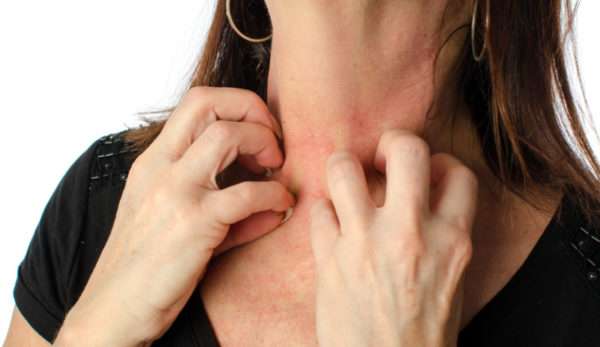
The most common symptoms that appear are:
- allergies in the form of angioedema or urticaria,
- accelerated hair growth in the application area,
- skin hyperemia,
- peeling of the affected area,
- swelling,
- feeling of burning and itching.
If the ointment gets inside, vomiting, nausea, and headaches may occur. To eliminate the reaction, you should rinse your stomach and consult a doctor.
Ointments for ringworm are highly effective, but provided that the treatment regimen is strictly followed. Therapy for the treatment of such a disease must be comprehensive. The use of ointments or gels should be supplemented with systemic medications. This approach will help to significantly shorten the period of complete recovery and prevent the development of relapses.
